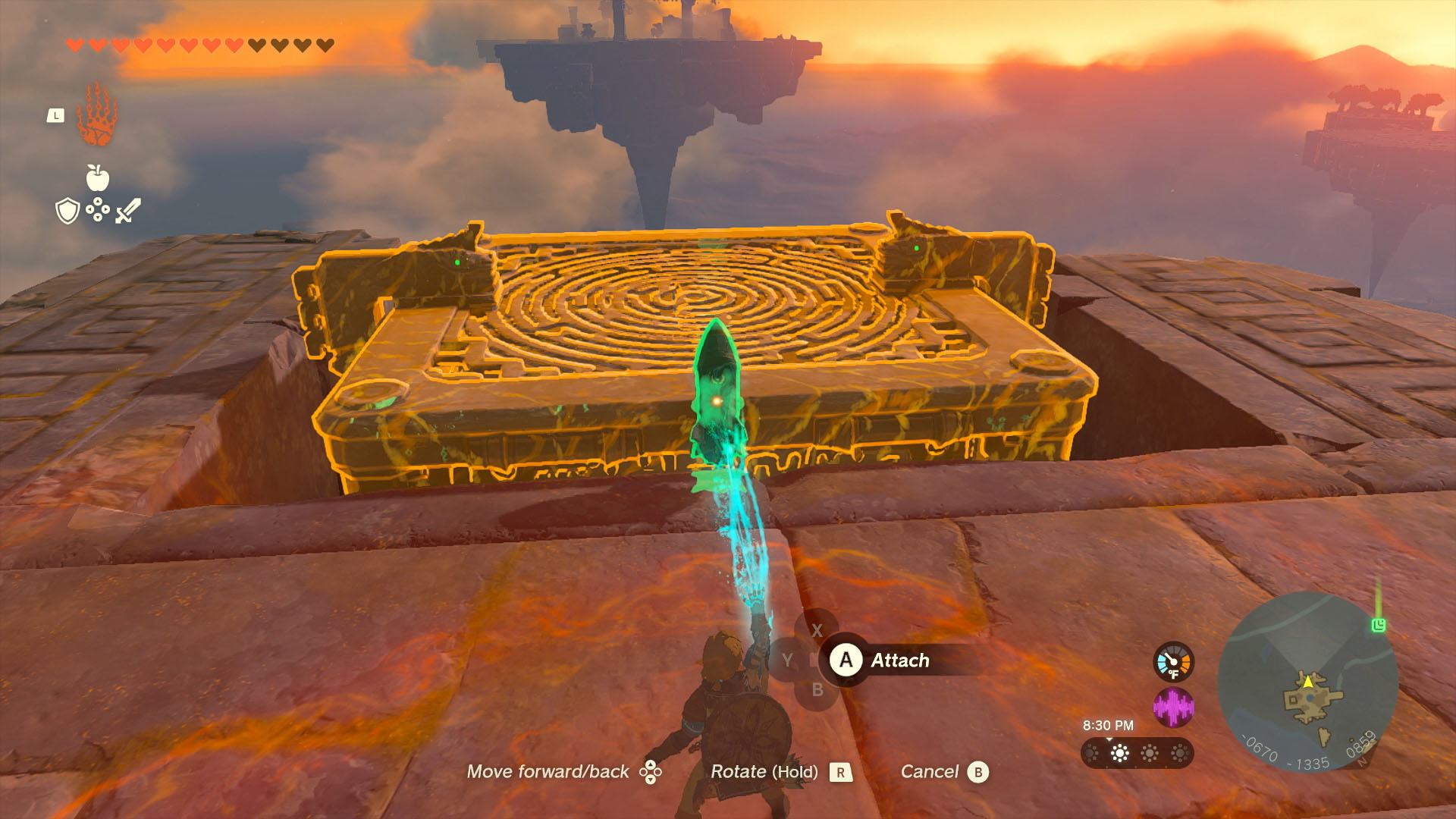
To say that I’ve been concerned about The Legend of Zelda: Tears of the Kingdom leading up to its release would be an understatement.
First off, it’s been six years since the release of Breath of the Wild (a game that’s one of my favourites of all time), and fan expectations are understandably very high for its successor. This is why, like many that have been eagerly consuming everything Nintendo reveals about the game, I was disappointed to learn that at least some aspects of Tears of the Kingdom‘s world seem to be borrowed and remixed from its predecessor.
Then there are rumours about technical issues, the long-running report that the game was originally designed for the mythical Switch Pro, and that even though it’s been in development for half a decade, Tears of the Kingdom feels more like an expansion than a true sequel worthy of the Zelda name.
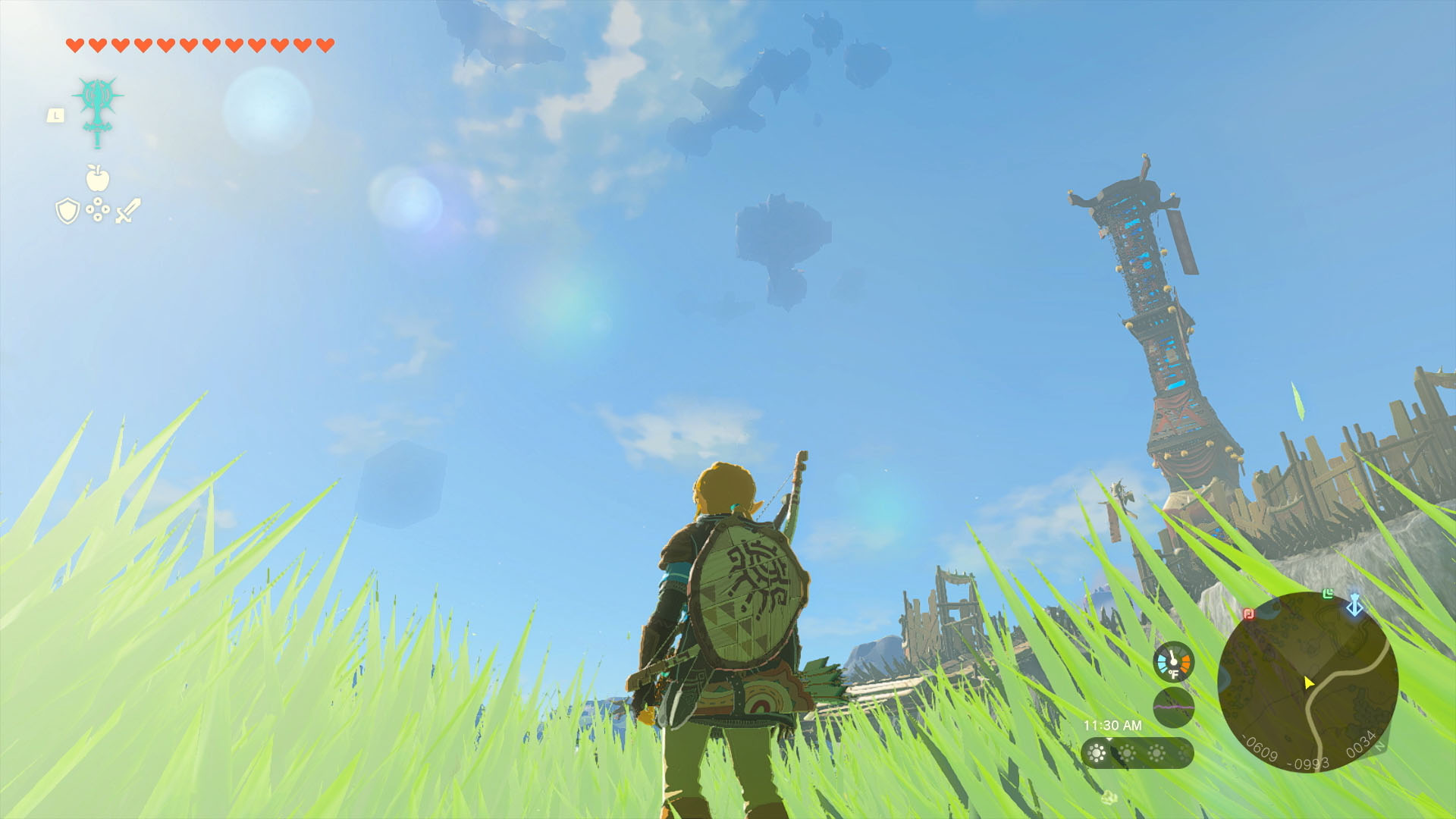
Image credit: Nintendo
Thankfully, based on a brief, very open section of the game I recently played, Nintendo once again likely has a genre-defining, groundbreaking game on its hands.
Let’s take a look at the game’s impressive new building system first. During one portion of the demo, I was tasked with making my way to a tower. I had the option of a full-frontal assault on the stairs leading up to the structure, or I could use Tears of the Kingdom‘s new building mechanics to sneak in from the back. After a brief failed attempt where I tried to run up the stairs swinging my sword like crazy, I opted for the latter.
First, I stumbled across several planks lying in the grass behind the tower. To move the largest plank that looked like it could work as a solid base for the structure I planned to build, I utilized Tears of the Kingdom‘s new ‘Ultrahand’ ability, which lets you pick up nearly any object and move it around.
Next, I dropped a Zonai ‘Balloon’ item from my inventory and rotated it to sit upright on the plank. While it’s still not totally clear what they are or where they come from, Zonais are green-coloured, battery-powered devices you can attach to other objects to move and power them (more on this later). Once the Balloon was situated how I wanted, I realized it needed some form of forward motion, so I grabbed a pair of Zonai fans and rotated and attached them to the plank, ensuring that the air was blowing to the back of my plank vehicle to propel it forward.
This was when it clicked that the Balloon I attached to my contraption likely needed to be powered somehow, so I added another Zonai item called a ‘Flame Emitter’ to its base, which powered the balloon with fire and hot air. At this point, my makeshift vehicle seemed like it was prepared to carry Link to the back of the base, allowing me to avoid all the enemies guarding its front, so I slashed a fan with my sword to activate my machine (check out the video below to see it in action).
Unfortunately, my contraption had too much momentum and smashed directly into the nearby cliff. This was when a Nintendo representative suggested I try out ‘Recall,’ a new ability that allows players to stop and rewind time. I jumped back on the weird flying car-like device sitting at the mountain’s base and marvelled as it carried me back to the cliff.
Unfortunately, I still couldn’t quite get over the spikes guarding the base to devise another solution. After several more failed attempts, I decided to ‘Fuse’ a Zonai ‘Rocket’ to my shield, allowing me to boost high into the air as the platform bashed itself into the side of the cliff. After dropping the Rocket on the ground to use the ability, I watched in surprise as it shrank down to Link’s size and attached directly to my shield.
Fuse, another ability Nintendo has talked about leading up to Tears of the Kingdom‘s release, allows players to combine various items together in unique ways. For example, I later used it to attach a flaming fruit to an arrow to burn a pile of leaves and reveal a Korok Seed, and attached a barrel to my shield… which serves no purpose other than looking ridiculous.
I then safely floated down to the tower with the help of Link’s Paraglider.
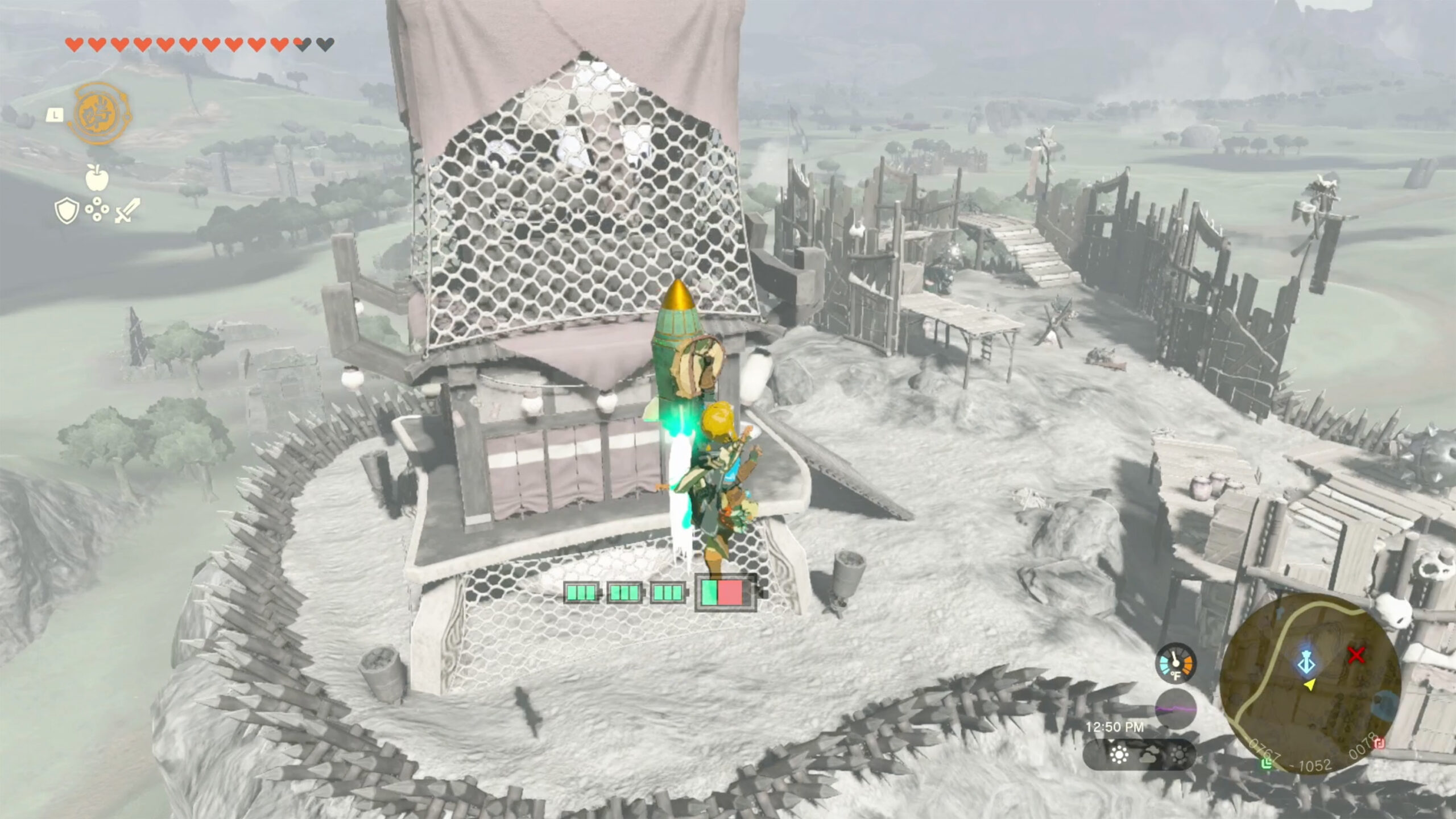
My contraption wasn’t the most elegant solution to the puzzle, but it worked and is an example of the open-ended experimentation Tears of the Kingdom encourages through its extensive building mechanics. It reminded me of a more customizable version of Breath of the Wild‘s Rune abilities like ‘Magnesis,’ which allows you to carry metallic objects and ‘Stasis,’ an ability that briefly stops time.
The next portion of the demo tasked me with navigating between several floating islands while using various abilities, Zonai devices and objects in the environment. In some cases, I just attached a rocket to my shield again to propel Link upwards, while in others, I experimented with attaching rockets to a floating platform, and in one situation, I built an airplane-like flying vehicle that even featured a steering wheel.
Also, just like in producer Eiji Aonuma’s recent Tears of the Kingdom presentation, I attached a rock to a spear via fuse and combine two broken weapons together. I’m not sure creating new weapons out of broken components will solve the issue many people have with Breath of the Wild‘s constantly breaking weapons, but it’s a fascinating spin on the concept and I’m excited to experiment with it more. Speaking of Aonuma, I feel like his development team caught wind of this video of YouTube Kleric making a “flying machine” in Breath of the Wild, because it seems to have inspired a lot of Tears of the Kingdom‘s mechanics, particularly during the initial part of the demo.
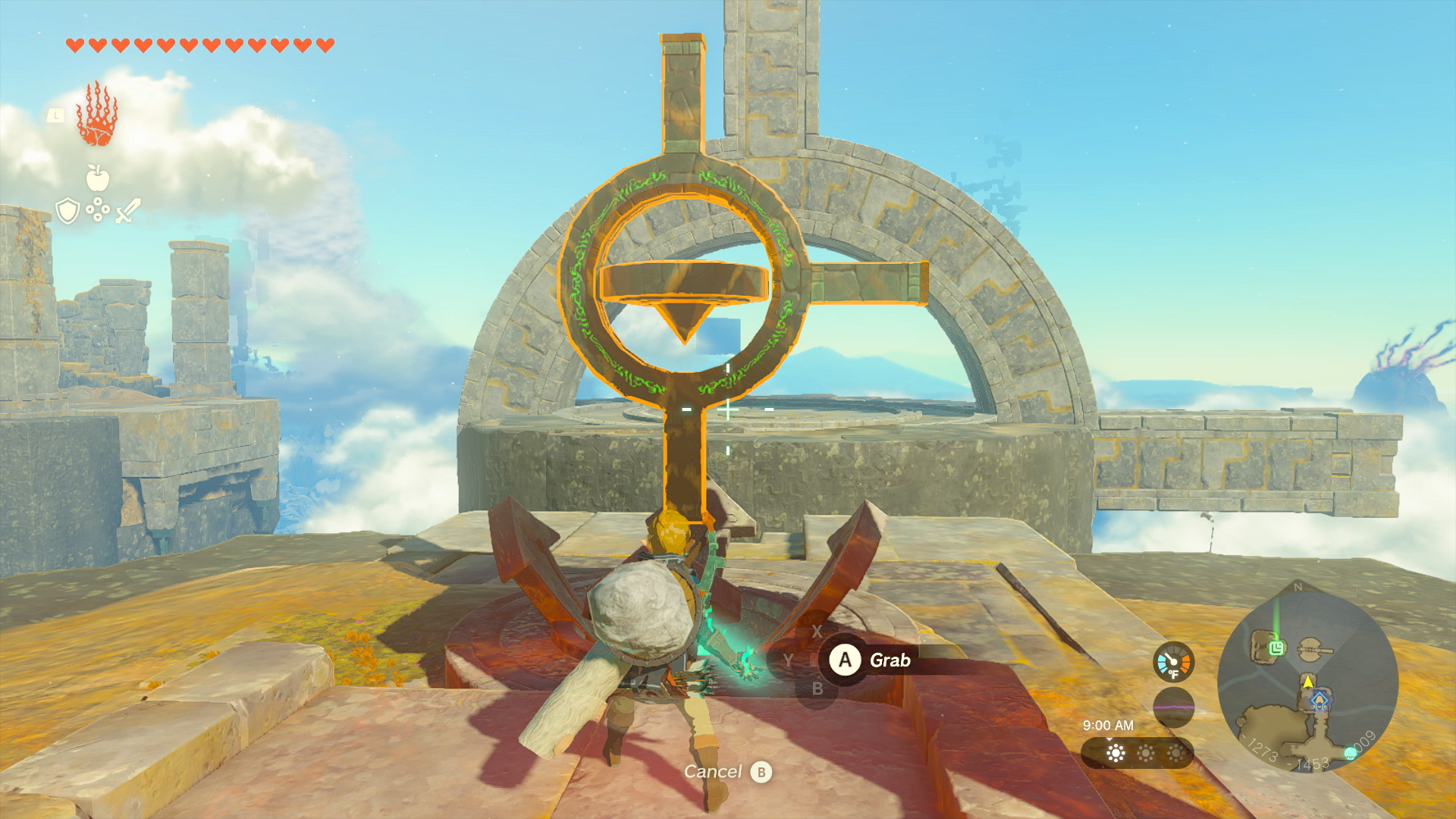
Image credit: Nintendo
It took me a while to get the hang of using Ultrahand and abilities like Fuse, but I think this is mainly because Nintendo’s demo dropped players right into the game. There was no tutorial or gradual introduction to Zonai items and Tears of the Kingdom‘s emphasis on Trailmakers-inspired building, so it was a lot to wrap my head around in a brief period. Still, the game’s intricate but accessible building system started to feel natural after only spending roughly an hour with the game, which speaks to how impressive it is.
On the more negative side of things, while Tears of the Kingdom look great, it’s still a Switch title. Graphical aliasing issues are rampant, giving the game a muddy look compared to crystal clear Xbox Series X and PlayStation 5 games, and strange clipping issues occur occasionally. For example, my club-spear combo weapon clipped through the environment. Thankfully, Tears of the Kingdom runs at a smooth frame rate and doesn’t suffer from noticeable pop-in. Still, just like with Breath of the Wild, I can’t help but wonder what Aonuma and his team could create if the Switch’s ancient hardware didn’t constrain them.
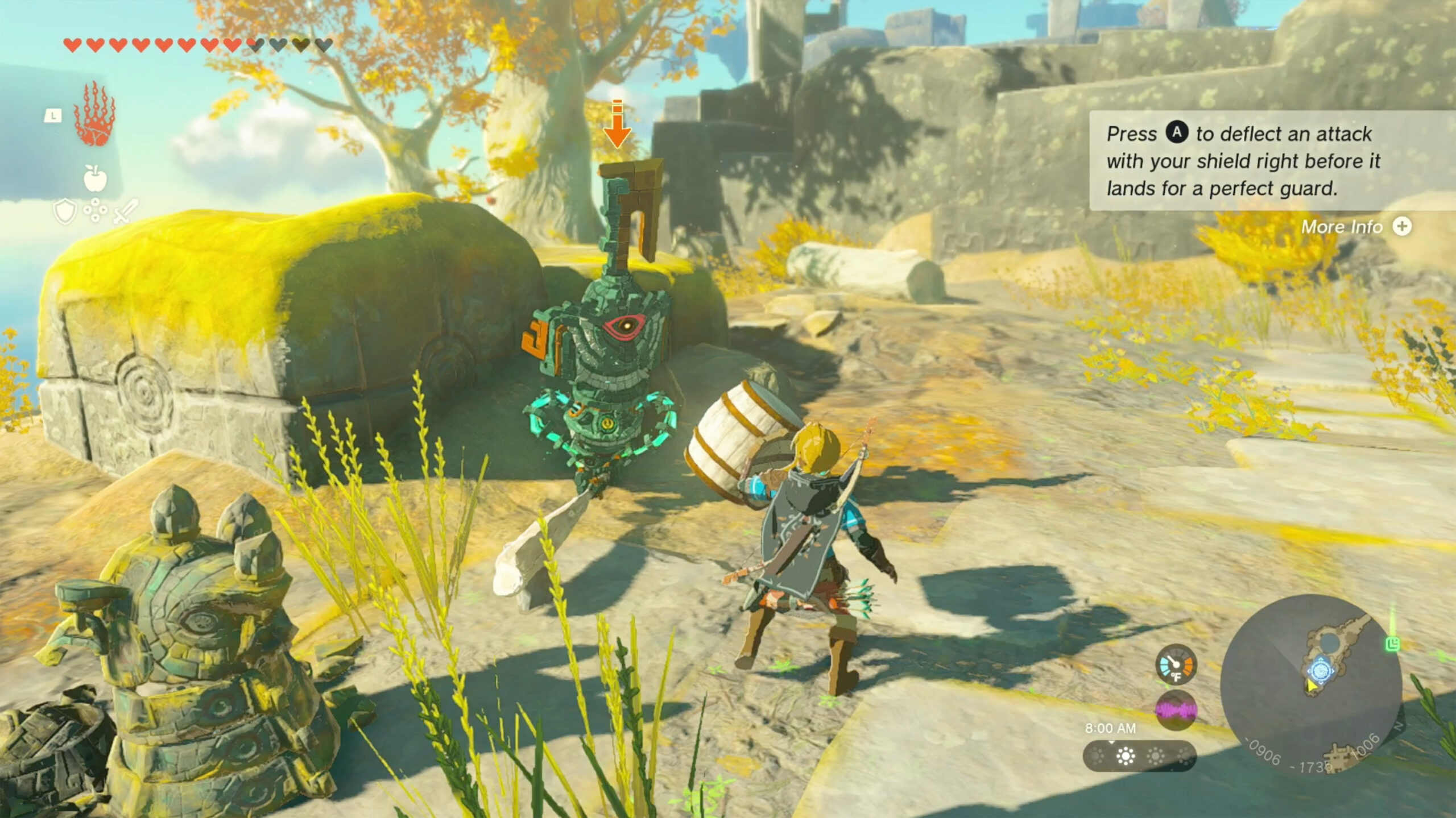 I also can’t shake the feeling that Tears of the Kingdom‘s focus on building is a strange direction for the Zelda series. At times, the game didn’t really feel like a Zelda title, but this might not necessarily be a bad thing, especially for a series that’s been around this long. Fresh takes on a franchise are important and rare when it comes to Nintendo’s series. Several questions still remain, too, including if Shrines and dungeons are back (and if there are more than four this time).
I also can’t shake the feeling that Tears of the Kingdom‘s focus on building is a strange direction for the Zelda series. At times, the game didn’t really feel like a Zelda title, but this might not necessarily be a bad thing, especially for a series that’s been around this long. Fresh takes on a franchise are important and rare when it comes to Nintendo’s series. Several questions still remain, too, including if Shrines and dungeons are back (and if there are more than four this time).
At the outset, I’m impressed with what I’ve played of Tears of the Kingdom so far and excited to see if the full game lives up to my high expectation for Link’s next adventure.
The Legend of Zelda: Tears of the Kingdom releases on May 12th for the Nintendo Switch for $89.96 and is available for pre-order now. MobileSyurp will have more on the game in the coming weeks.
MobileSyrup utilizes affiliate partnerships. These partnerships do not influence our editorial content, though we may earn a commission on purchases made via these links that helps fund the journalism provided free on our website.
Header image credit: Nintendo
MobileSyrup may earn a commission from purchases made via our links, which helps fund the journalism we provide free on our website. These links do not influence our editorial content. Support us here.

